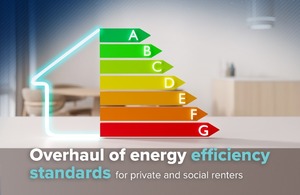Energy and net zero secretary Ed Millibandhas pledged that rented homes should be warmer and free from mould by 2030. The announcement is likely to be a significant boost for SME builders.
- Estimated 5.7m rented homes need to be upgraded
- 71 per cent of homes built before 1950 are D grade or lower
- All rented homes should have a C grade or higher by 2030
Promise to make rented homes warmer lights up SME builders’ future
Smaller builders’ pipeline of new work is expected to heat up with the government’s pledge that rented homes should be less costly to keep warm.
Energy and net zero secretary Ed Milliband said he would consult on plans to ensure all rental homes reached an energy performance certificate, EPC, of at least ‘C’ by 2030.
“Government intervention is now well overdue to transform living standards and deliver the safety and security of warmer, cheaper homes that are free from damp and mould,” he said.
Currently, the minimum requirement for a rental property is‘E’. Estate agents Savillshas estimated more than half of the 5.7m privately rented homes in England and Wales will need to be upgraded.
Nearly three quarters of homes built before 1950 are below ‘C’, with an estimated 1.8m requiring significant work to upgrade.
National Federation of Builders policy and market insight head Rico Wojtulewicz said: “It’s a new pipeline of work, although we will need a lot more EPC assessors.”
Typical work involved would include loft and floor insulation, LED lights and making windows and frames more airtight.
More small sites needed to support SMEs
SME builders are feeling cautiously optimistic following housing secretary Matthew Pennycook’s comments about the need to diversify at a Labour Party panel discussion earlier in the week.
“There is no way we’ll build enough homes in this country without getting many more SMEs involved in building. We’ve got to give them the support they need to do so,” he said.
He called for a greater focus on the master development of large sites so that more high-quality, attractive and sustainable places with good infrastructure and amenities could be built.
The Federation of Master Builders chief executive Brian Berry said: “We need to see more small sites unlocked by ensuring that provisions in the national planning policy framework are being followed at a local level.
“There must also be more dedicated resources given to local authority planning departments, specifically to support small builders navigate the planning system.”
In 2021-2022 the largest 11 housebuilders delivered about 40 per cent of UK homes according to a Competition and Markets Authority’s housebuilding study published in February.
According to FMB figures SMEs build only ten per cent of all new homes compared with 40 per cent back in 1984.
Finance brokers Hank Zarihs Associates said development finance lenders were hoping the prime minister Sir Keir Starmer’s pledge to reform planning would change this. They are particularly interested in his proposal to introduce planning passports to “turbo charge” inner city housebuilding.
LinkedIn Question: Should the definition of brownfield land be changed to enable more homes to be built in cities?

